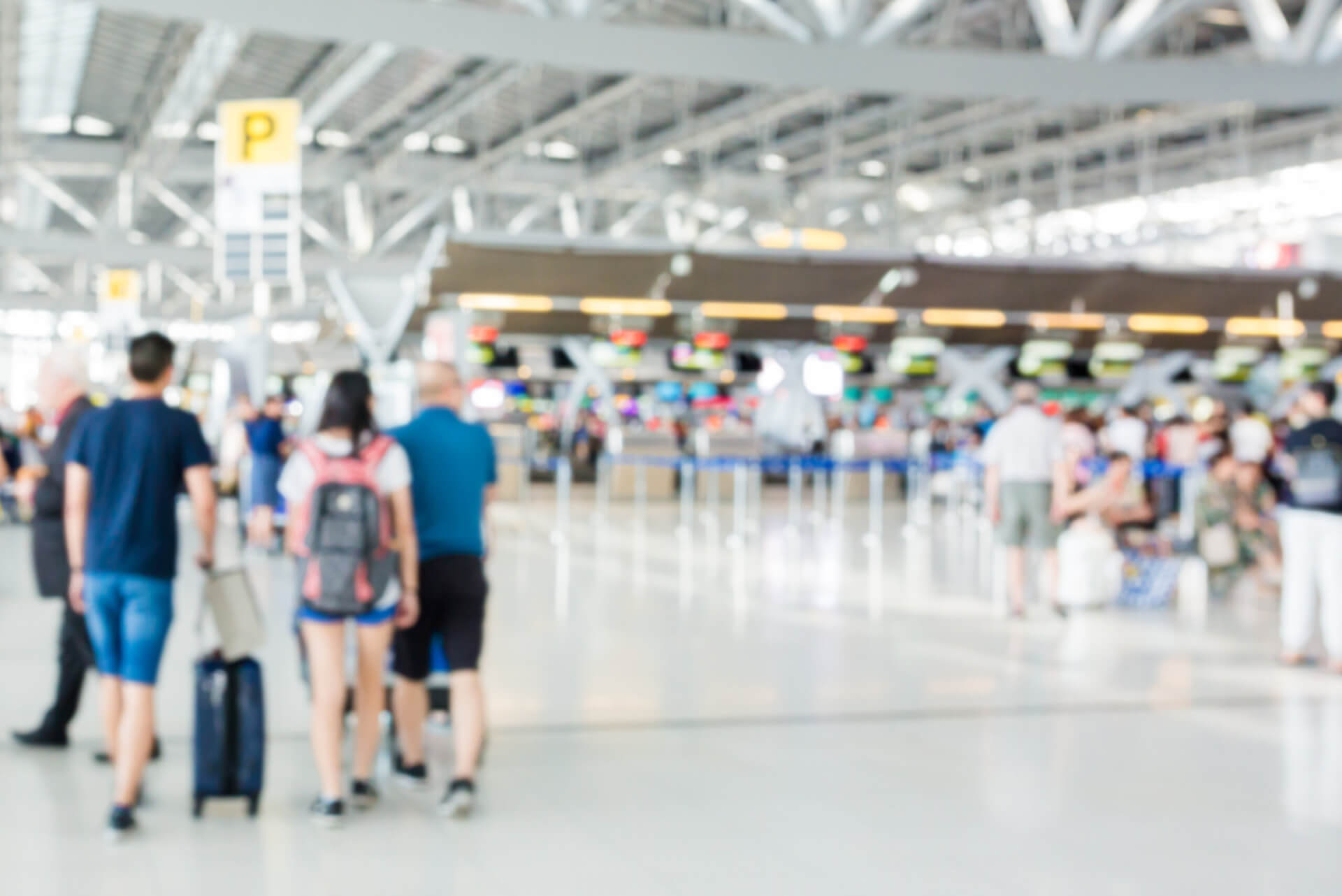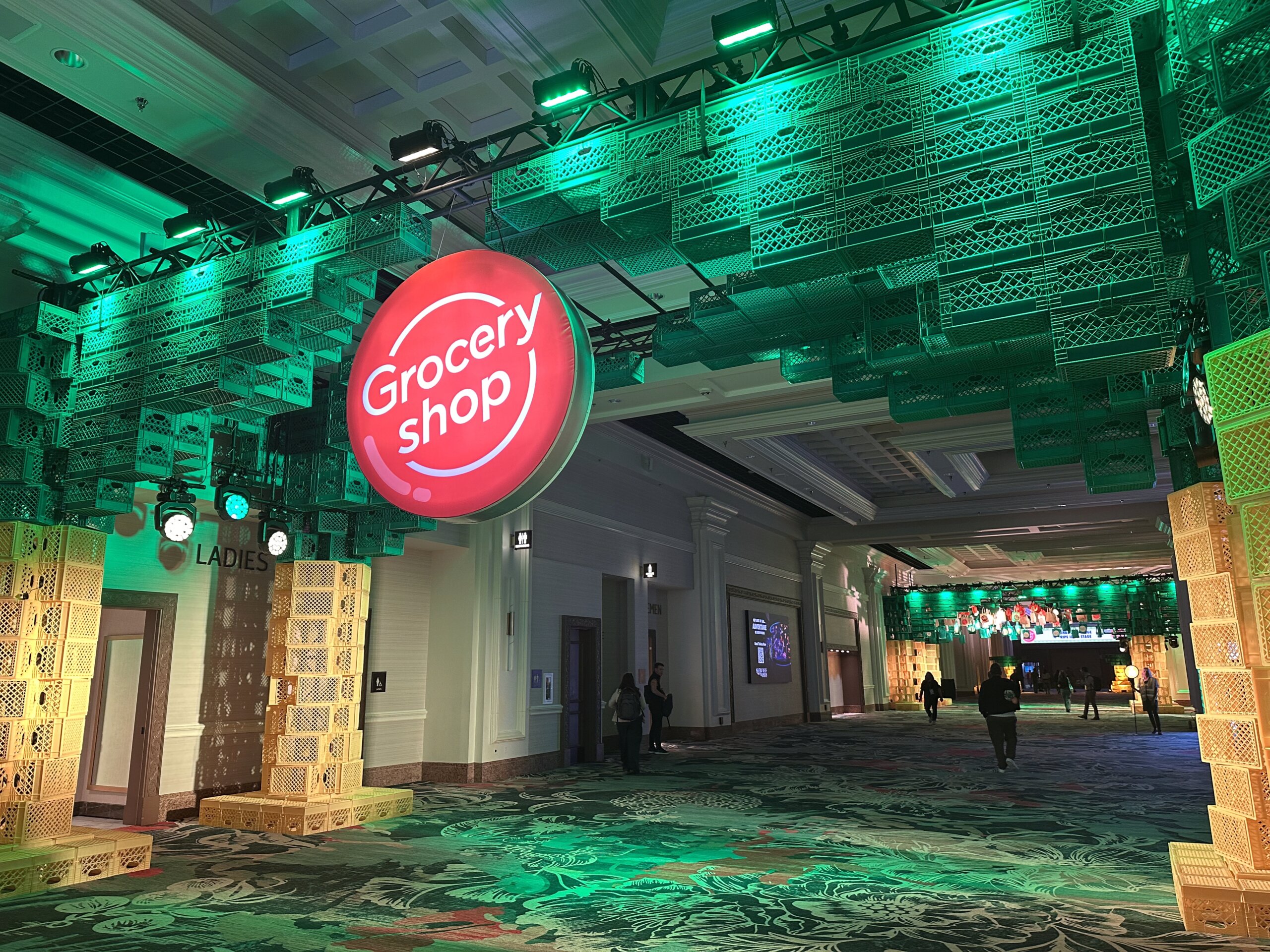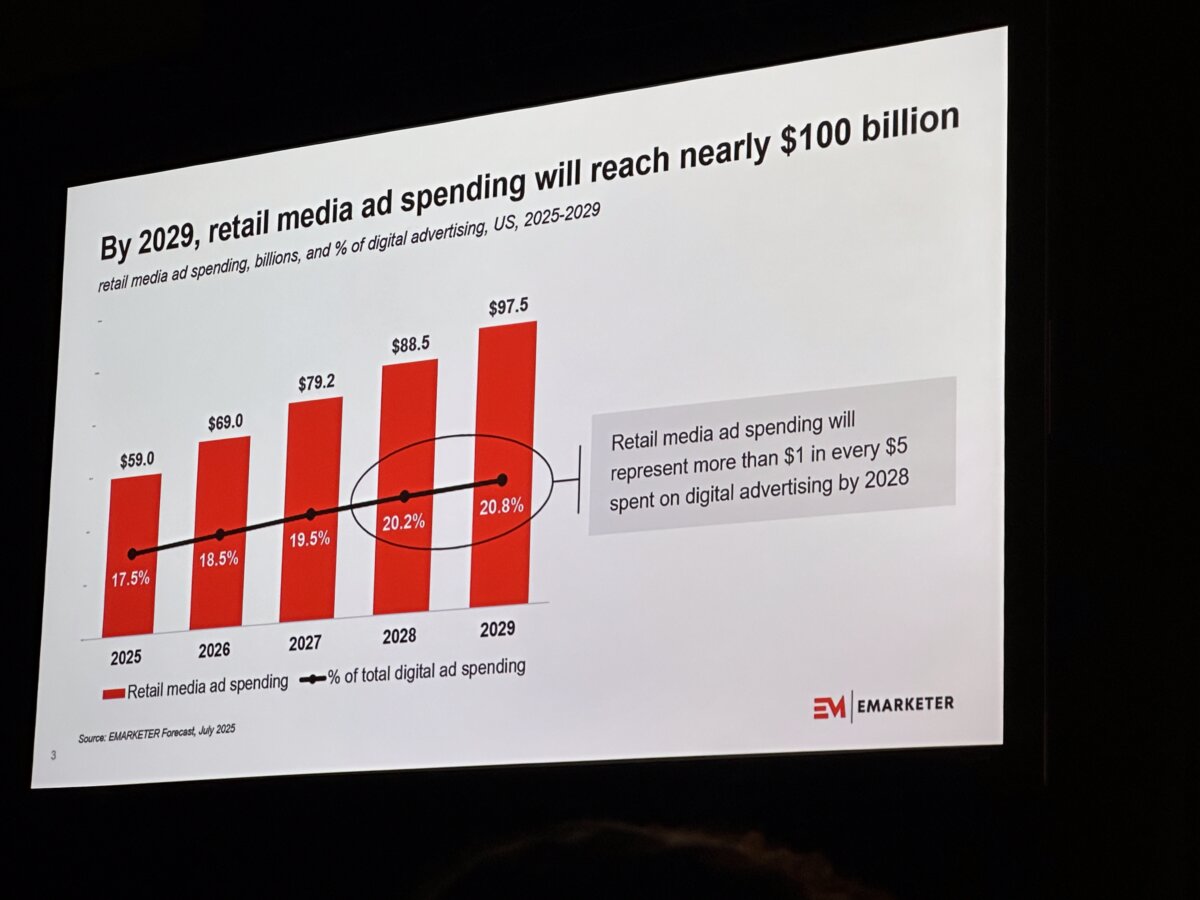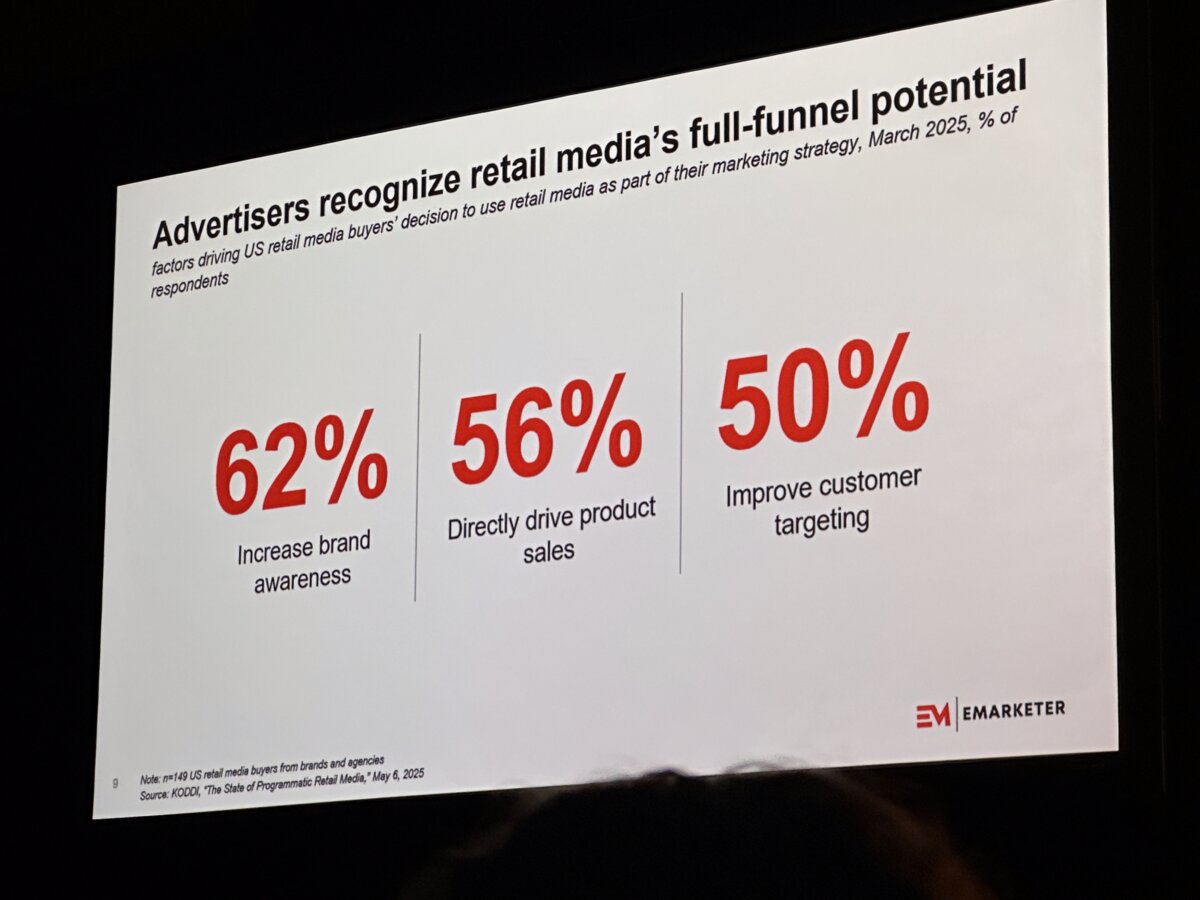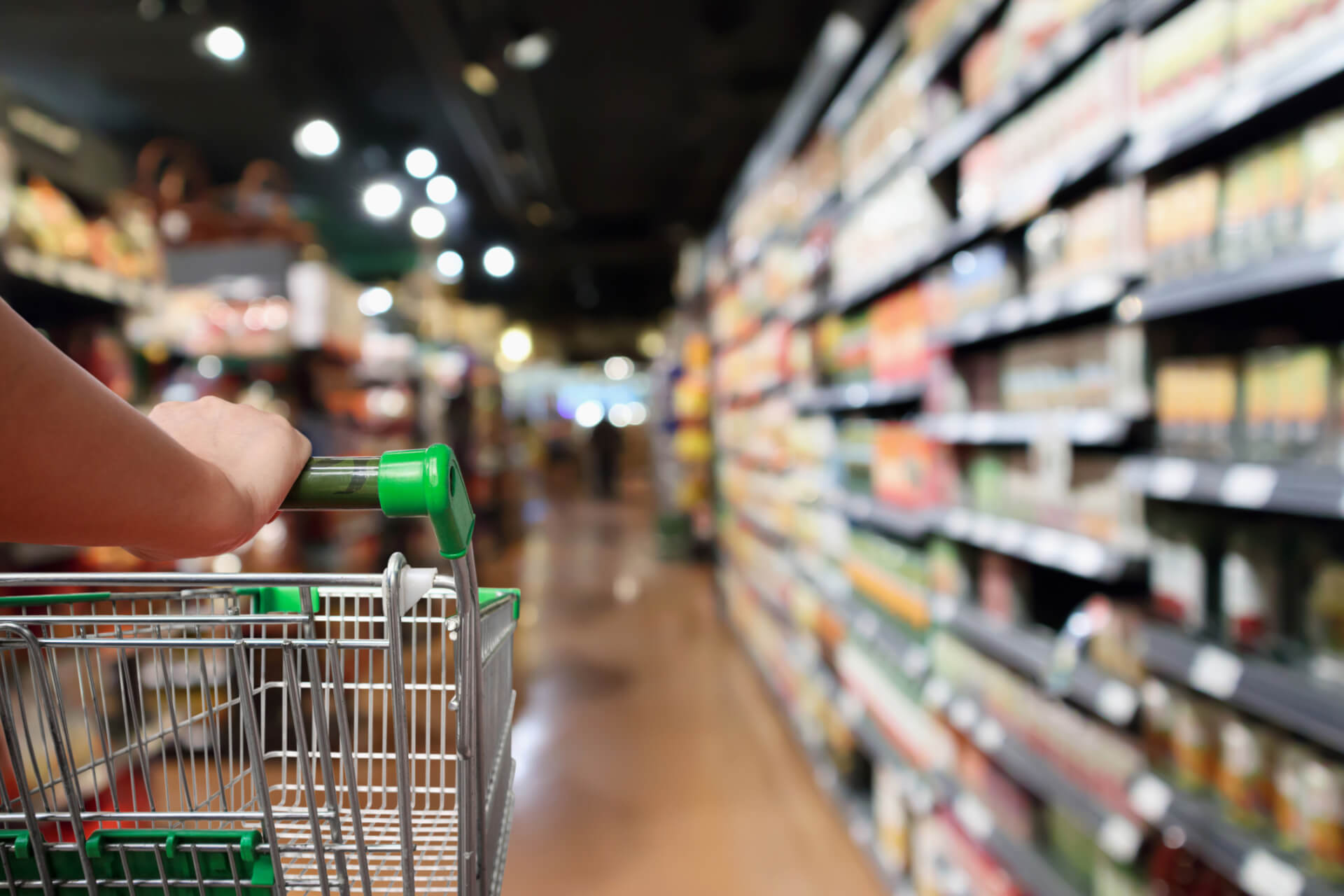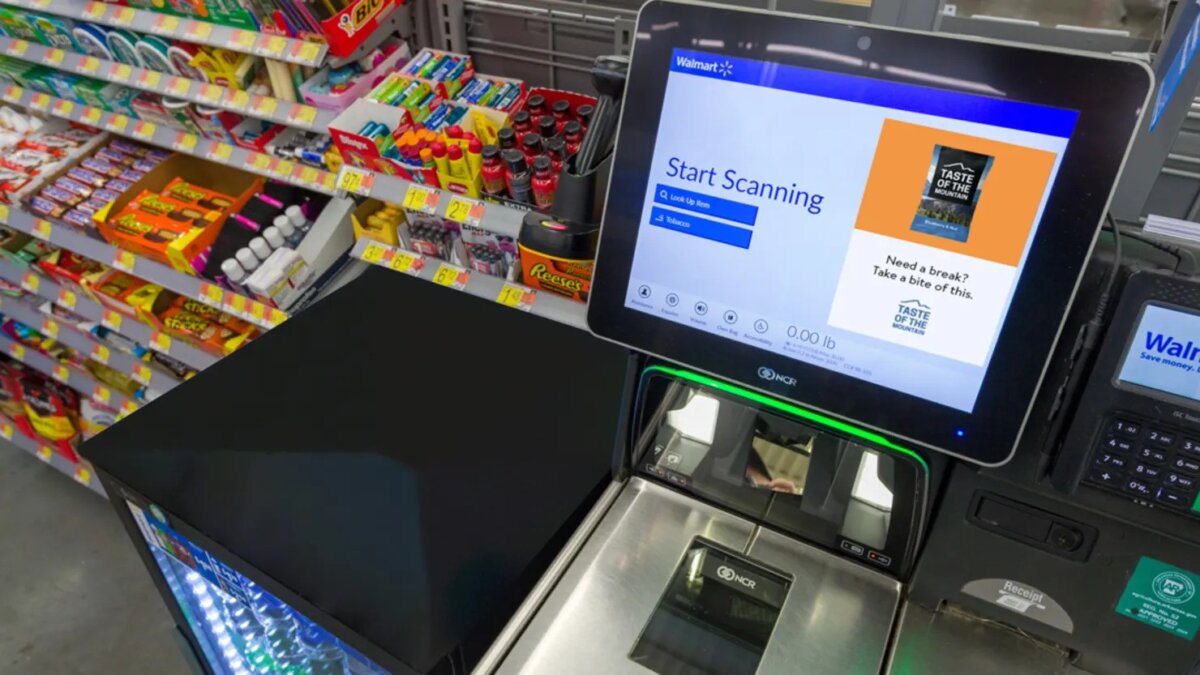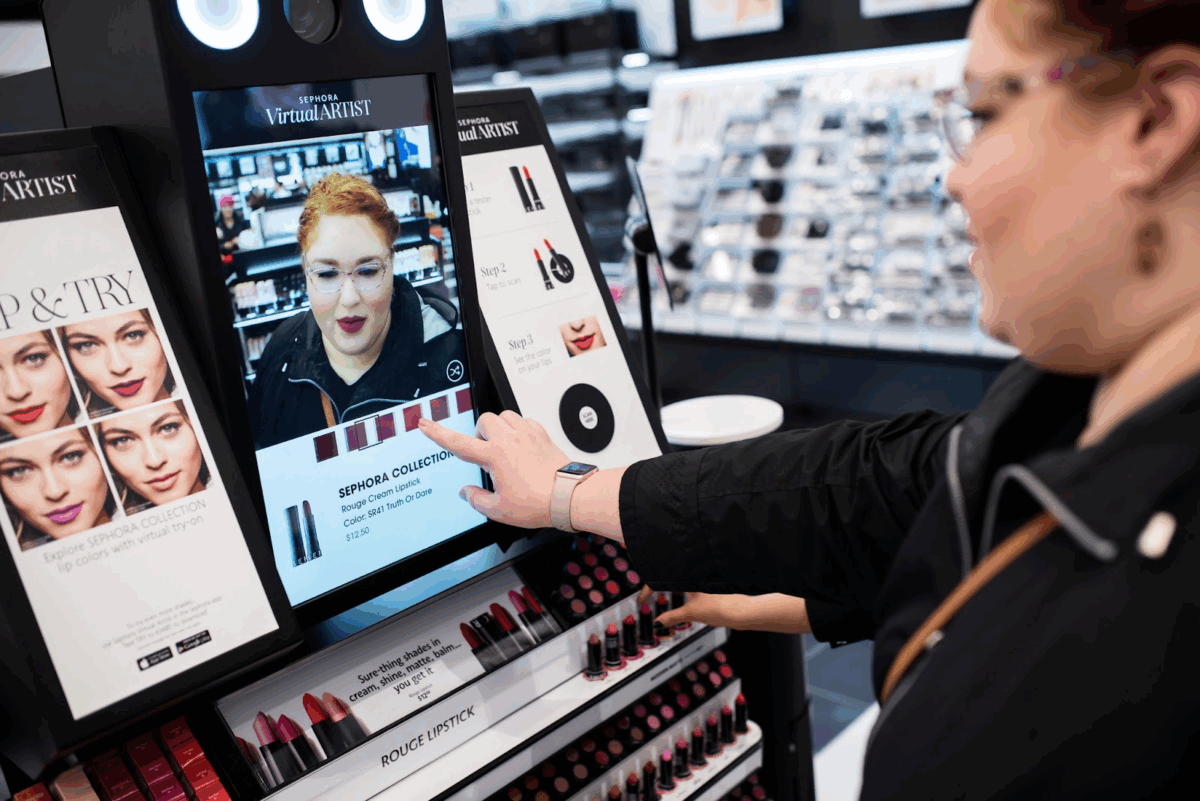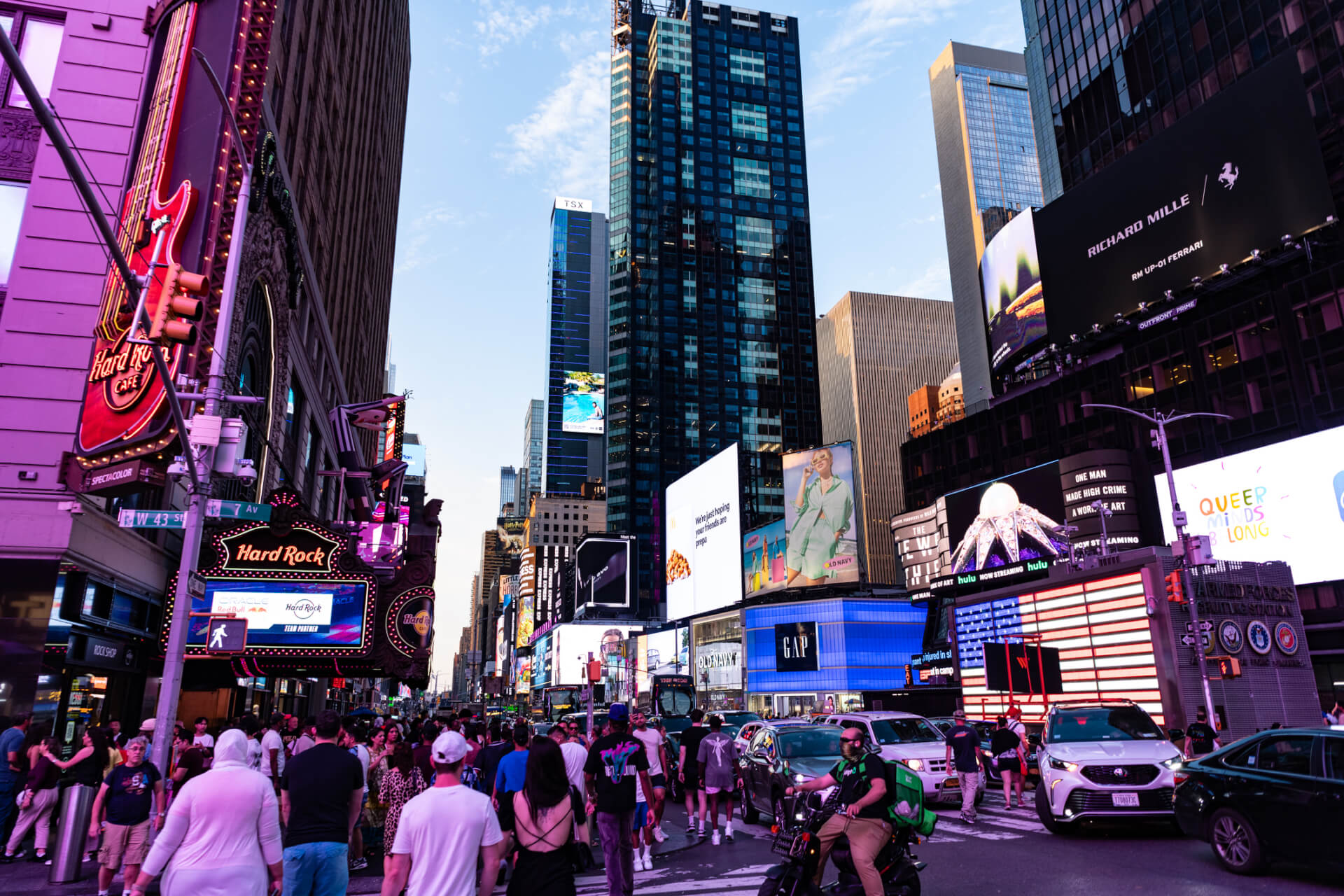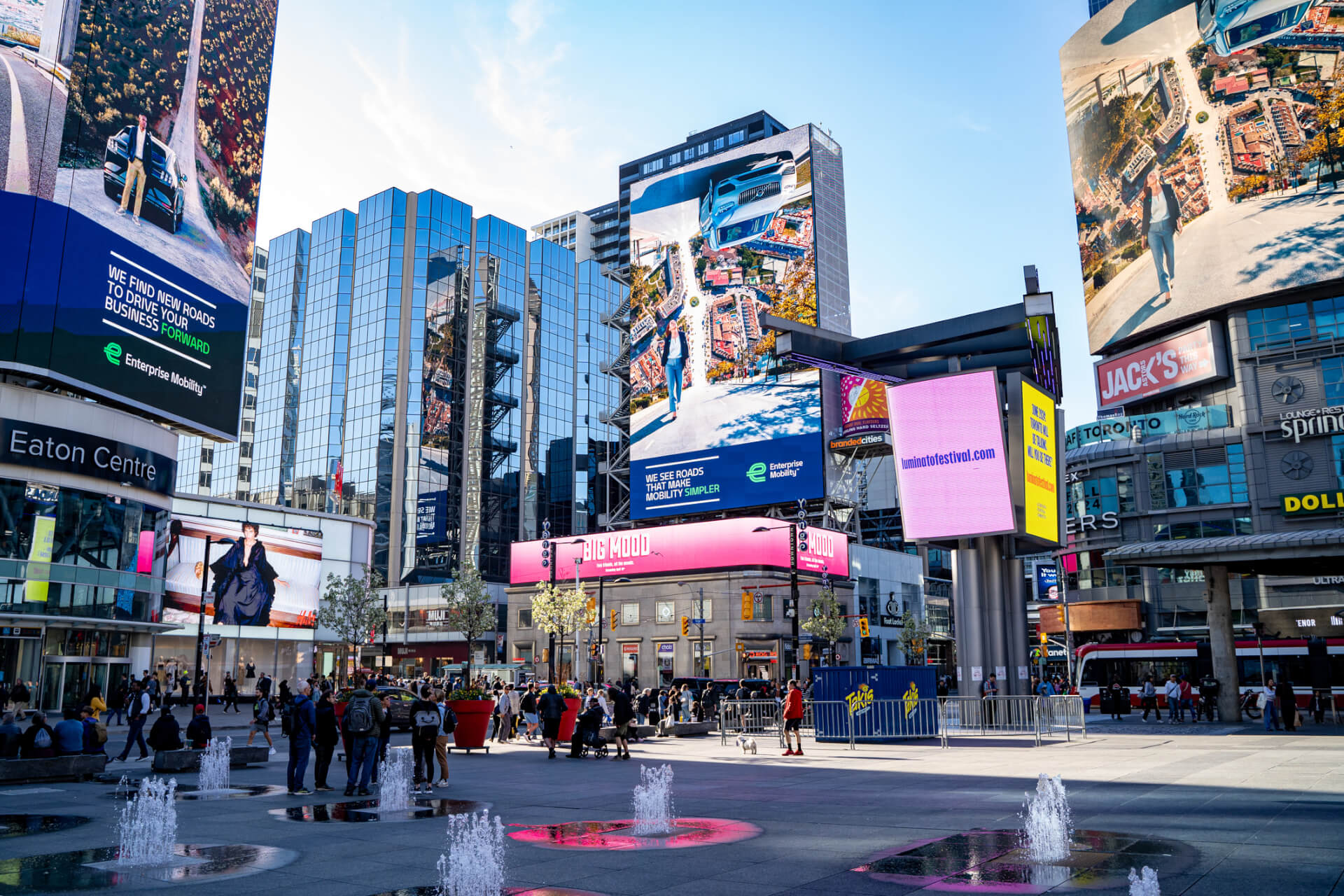| October 11, 2021
Leveraging out-of-home for maximum impact this travel season
It’s springtime, and in North America, we’re breathing a collective sigh of relief. The days are getting longer, the weather is warming up, and travel season is kicking into high gear.
For advertisers, this surge in travel presents the perfect opportunity to leverage out-of-home (OOH) advertising in bold, innovative ways. Unlike digital ads that compete for attention on crowded screens, OOH captures the attention of travellers at key moments—whether they’re catching a flight, cruising down highways, or wrangling kids at an amusement park.
In this article, we’ll explore how OOH is uniquely positioned to engage audiences on the go, and how to best leverage this medium to maximize marketing impact during peak travel seasons.
Key travel trends for 2025
Despite economic uncertainty, travel remains a priority, with 76% of travellers plan to spend the same or more on trips in 2025 compared to last year. The travel bug isn’t letting up, and neither should your marketing.
One significant trend is reshaping the spring break landscape: the rise of solo travel. Airbnb data shows a 90% uptick in solo searches for spring travel dates compared to last year. Individuals are increasingly embracing “soft travel” – slower-paced trips focused on wellbeing and leisure.
A recent survey from Squaremouth reveals that solo travelers remain dedicated to their adventures despite rising travel costs, with many willing to invest significantly in their trips. Over half (53%) plan to spend more than $3,000 on their next vacation, while 39% expect to budget between $1,000 and $3,000. Beyond spending more, they’re also looking beyond borders—87% of solo travellers are interested in taking international trips this year. With solo trips averaging 19 days—longer than the typical 14-day trips taken by couples—this extended travel time increases exposure to OOH advertising, especially in high-traffic transit hubs like airports, train stations, and public transport.
With their larger budgets and flexible travel plans, solo travellers are an ideal audience for OOH campaigns promoting premium experiences, accommodations, and activities. Their spontaneity makes them highly receptive to destination-based advertising, while the rise in international travel presents opportunities for global OOH campaigns to build consistent brand recognition across multiple markets. Additionally, digital OOH formats enable dynamic, real-time messaging tailored to travellers’ locations, enhancing relevance and engagement.
OOH strategies to engage travellers on the go
No matter where travellers are headed or how they’re getting there, OOH advertising offers unique advantages for connecting with them at every stage of their journey.
Capture audience attention during wait times
Transportation hubs like airports, cruise terminals, and train stations create environments where travellers have extended dwell times with limited distractions, making them exceptionally receptive to advertising messages.
Airports are a perfect example. Travellers spend hours waiting at airports, from check-in to boarding, providing a captive audience actively seeking mental stimulation. Strategic placement of engaging OOH displays across security lines, departure gates, and baggage claim areas transforms otherwise idle time into valuable brand exposure.
What makes these captive audience moments so valuable? It comes down to a few key factors:
- Longer dwell time: Travel often means long wait times, giving you the chance to deliver more detailed messages or tell a story through interactive displays.
- Fewer distractions: With fewer digital distractions and a heightened awareness of their surroundings, travellers are more likely to notice and engage with advertisements.
- Varied demographics: Airports are a melting pot and one of the few places where families, leisure travellers, and business executives come together, allowing brands to target diverse audiences in a single location.
- Global mix: Airports allow brands to engage with a truly global audience, presenting a unique opportunity for cross-market advertising.
- Access to high-value customers: C-suite executives can be hard to reach. By placing ads in strategic locations like airport lounges, brands can bridge the gap and offer tailored messaging for luxury brands, high-end airlines, hotels, and B2B services.
Whether it’s a theme park promoting family packages on airport digital displays or a beach destination showcasing its attractions in cruise terminals, these strategically placed OOH messages can sway decision-makers at just the right moment. Plus, OOH ads can’t be skipped, so your message is more likely to be seen than on other digital platforms.
For example, Disney’s vibrant ads at LAX and DFW tap into nostalgia and whimsy, sparking an emotional response that draws travellers in.
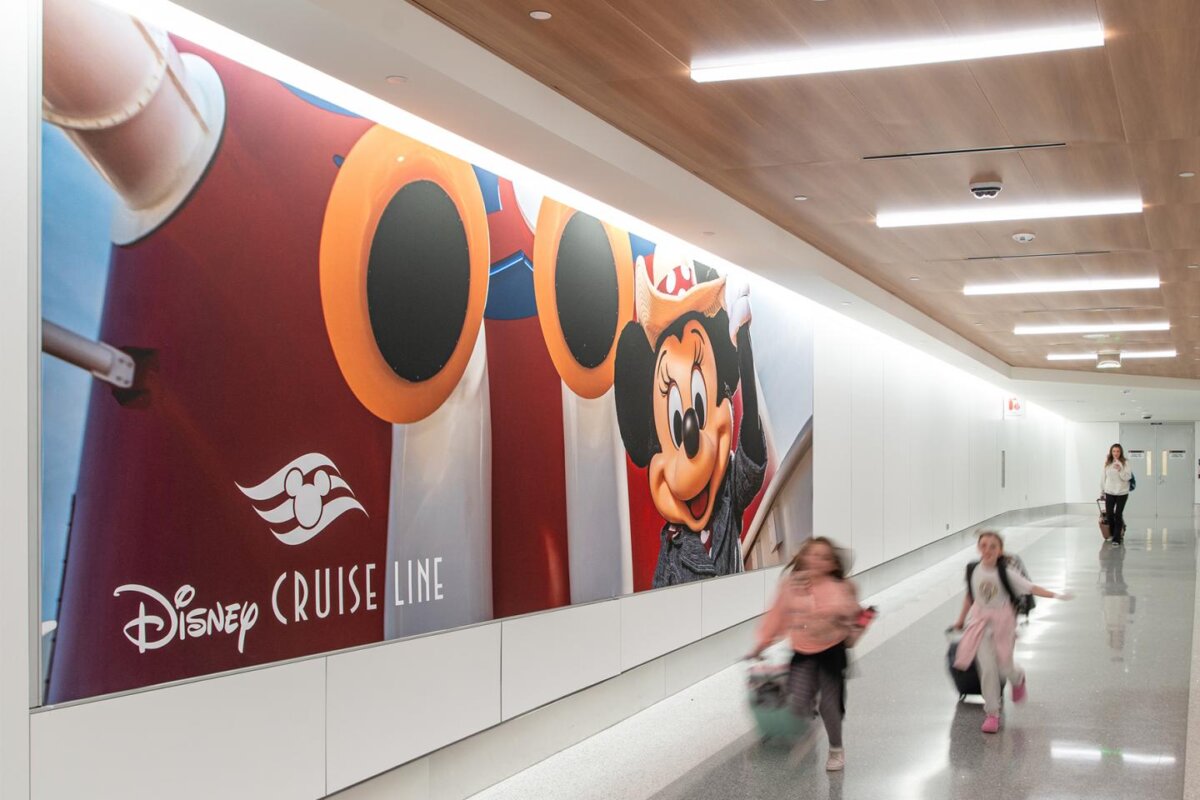
Use interactive experiences to drive engagement
Interactive experiences are essential for driving deeper engagement and building meaningful connections with audiences. For travel advertisers, incorporating interactive elements can turn passive viewers into active participants, strengthening brand affinity and inspiring action.
Take, for example, a digital billboard in a bustling city center featuring a QR code inviting passersby to “Scan & Explore.” With a quick scan, users are taken to an interactive landing page where they can browse curated travel guides, receive personalized trip recommendations, and access exclusive booking offers. By strategically placing QR-enabled OOH ads in high-traffic areas like transit hubs and shopping districts, travel brands can seamlessly bridge the gap between inspiration and planning—turning interest into action in just a few taps.
Harness the power of pDOOH for context-driven personalization at scale
While ad placement is a top consideration, so is timing.
Programmatic digital out-of-home (pDOOH) is revolutionizing travel advertising through audience-first planning and real-time data analytics. With this technology, brands can deliver contextual messaging that feels personally relevant while reaching thousands of travellers.
For example, a luxury resort brand that runs a campaign in premium malls targeting high-end shoppers. Their content might showcase resort locations like Dubai or Singapore, positioning them as shopping destinations for lovers of designer brands. In doing so, they reach shoppers who’ve demonstrated interest in high-end experiences when they’re already in a spending mindset.
Contextualized targeting makes sure travel advertisements reach audiences in environments that complement and enhance the message, making them particularly effective for specialized travel segments. These advantages make DOOH a powerful tool for travel brands looking to enhance visibility and engagement in a competitive market.
Capitalize on omnichannel retargeting for continued engagement
One of OOH’s most powerful capabilities is enabling retargeting across channels. By reaching audiences first exposed to DOOH ads via mobile or digital platforms, marketers can deliver a more personalized experience that keeps their brand top-of-mind throughout the customer journey.
To boost brand awareness and drive consideration for its premium luggage, Samsonite launched the Take What’s Yours campaign across major U.S. cities. The campaign encouraged professionals to use their PTO and travel more, with eye-catching DOOH ads placed in high-traffic spots like office buildings, malls, and apartment complexes. Aimed at digitally-savvy consumers, the campaign extended its messaging across CTV, social, and online video for a seamless cross-platform experience—ultimately driving a 53% lift in purchase consideration.
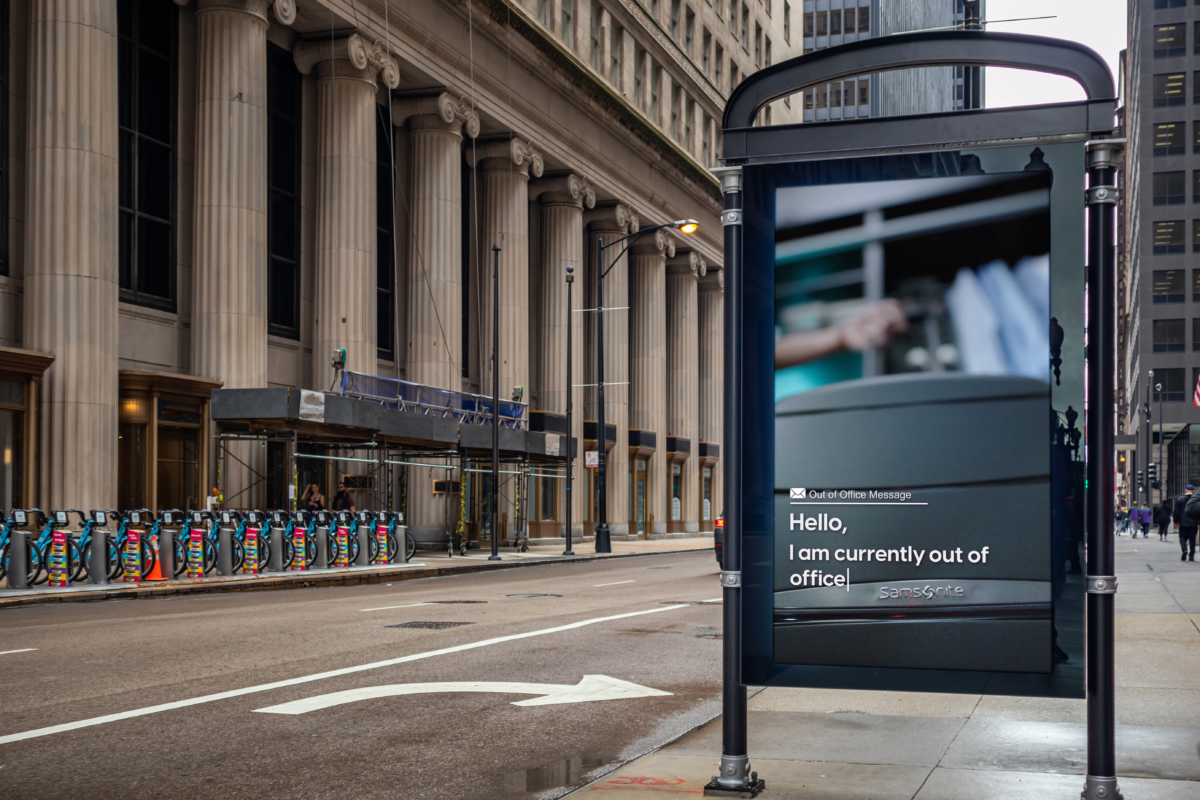
For travel advertisers, this highlights how OOH can convert seasonal foot traffic into real bookings. A resort chain, for example, could deploy transit ads in spring break hotspots, using QR codes to direct travelers to exclusive deals or virtual tours—seamlessly bridging awareness and action.
Leveraging OOH advertising for travel season success
OOH advertising offers unmatched opportunities to engage with diverse audiences around the world. By strategically placing ads at key travel touchpoints and leveraging the power of digital and programmatic OOH, brands can craft campaigns that speak to specific traveller segments while maintaining the broad reach that makes OOH so effective.
Whether your brand is travel-related or simply looking to connect with consumers on the go, now is the perfect time to integrate OOH into your marketing strategy for the season.
Interested in getting started with programmatic DOOH this travel season?
Explore curated audiences in our Travel & Tourism package here!
